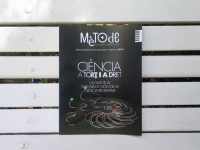
In 1844, a surprising book was published in the United Kingdom. Using the great wealth of knowledge that science was starting to generate, that treatise, written in a way that made it understandable for lay people, offered a rather coherent view of how matter had formed structures over vast periods of time to produce stars, planets, life on Earth, the evolution of several plant and animal species, and brain activity. The title was Vestiges of the natural history of creation, and its author remained anonymous for forty years. The world had to wait until Robert Chambers passed away to know who had thought up such a magnificent best seller.
Chambers was no scientist – his main dedication was book and newspaper editing – and his boldness was partly due to amateurism, which freed him from the airtight compartments that had already been created in science, divided in increasingly specialised disciplines. The book, of course, had some mistakes, and in the absence of scientific data, he approached some topics with excessive lightness, which earned him fierce criticism from the academy, including Thomas H. Huxley, who wasted no opportunity to sharpen his shrewd claws. However, the readers really liked it. As did some scientists and naturalists, including Alfred Russel Wallace, who considered the book an interesting compendium that could incentivise scientific exploration.
Read today, Vestiges is surprising due to some bright flashes of anticipation and to the skill with which Chambers weaves the thread of the history of the universe. He explains cosmic evolution from the simplest forms of matter, organised according to the laws of physics; the formation of the solar system by the accumulation of matter around a star; Earth’s location in the Cosmos («There is nothing at all singular or special in the astronomical situation of the earth»); the turbulent geological life of our planet; biological evolution – without reaching the concept of natural selection, although he was actually quite close – and the idea that humans are a new species in our world; and the relationship between our minds and our brain and the fact that mental phenomena are the result of brain activity and must therefore be studied as any other organic phenomenon («The human constitution is merely a complicated but regular process in electrochemistry»).
«Read today, Vestiges is surprising due to the skill with which Chambers weaves the thread of the history of the universe»
One year after the publication of Vestiges, Alexander von Humboldt started publishing his magnum opus, Cosmos. The approach – and magnitude – of Humboldt’s work is different to Chambers’s, but the underlying idea is the same: to offer a universal history weaved using scientific knowledge. However, these unifying works were rare objects in the scientific explosion of the ninteenth and twentieth centuries, which generated – and required – experts in increasingly specific fields. Until the late 1980s, when David Christian, a historian from the Macquarie University in Sydney, decided to set up a university course on what he called big history. Not every year brings a new academic discipline. In this case the path was paved, facilitating the appearance of courses on big history in a handful of universities around the world. The goal cannot be more fascinating: to travel from the Big Bang to Beethoven’s mind without ever leaving the chain of knowledge. In Spain there is a pioneering group at the University of Oviedo, led by Olga García Moreno. So, there you have it, coming soon to the best universities: big history.





